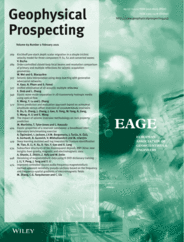
Full text loading...
 , Nam Pham1, Sergey Fomel1
, Nam Pham1, Sergey Fomel1
We propose an algorithm for seismic trace interpolation using generative adversarial networks, a type of deep neural network. The method extracts feature vectors from the training data using self‐learning and does not require any pre‐processing to create the training labels. The algorithm also does not make any prior explicit assumptions about linearity of seismic events or sparsity of the data, which are often required in the traditional interpolation methods. We create the training labels by removing traces from different receiver indices of the original datasets to simulate the effect of missing traces. We adopt the framework of the generative adversarial networks to train the network and add additional loss functions to regularize the model. Numerical examples using land and marine field datasets demonstrate the validity and effectiveness of the proposed approach. With minimal computational burden and proper training, the proposed method can be applied to three‐dimensional seismic datasets to achieve accurate interpolation results.

Article metrics loading...

Full text loading...
References


Data & Media loading...

